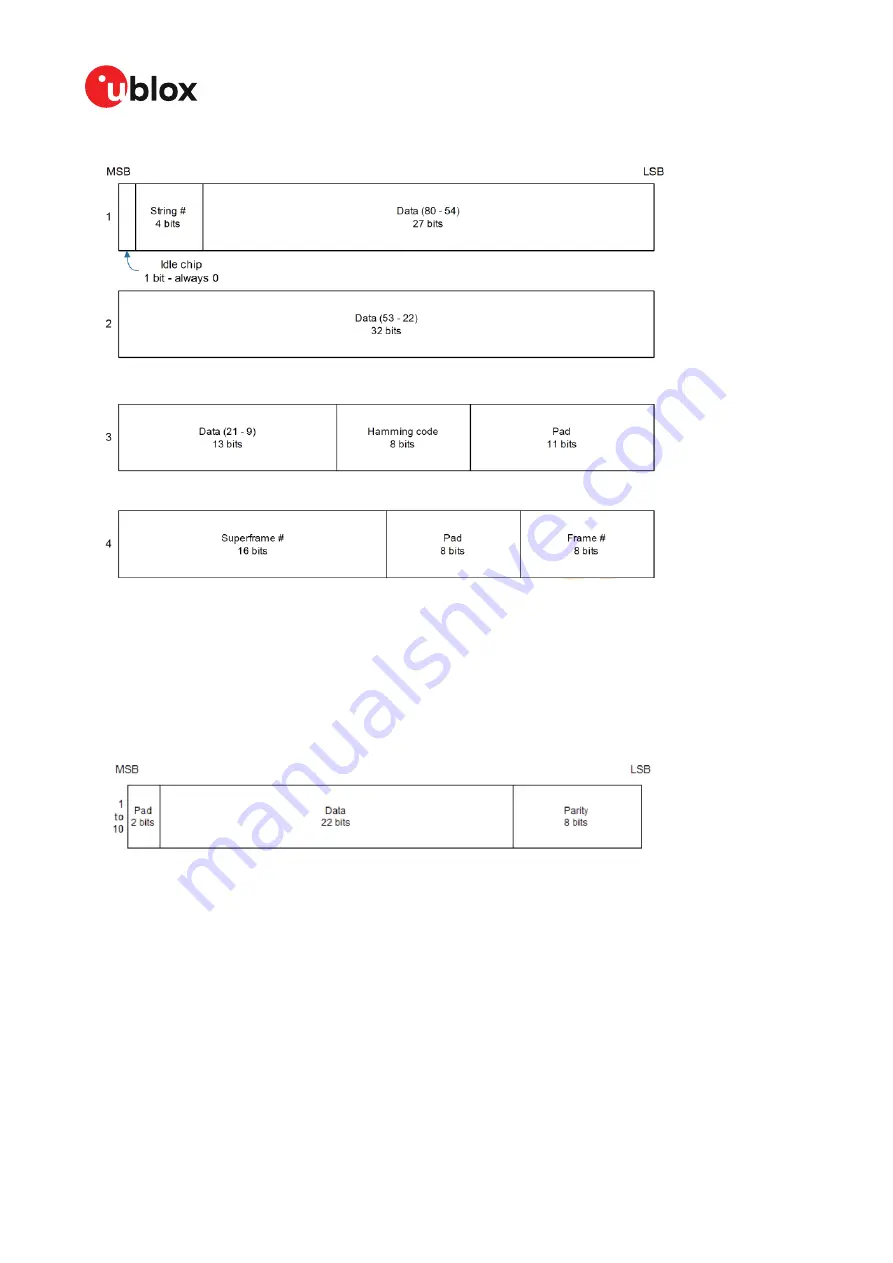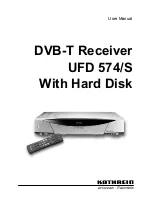
NEO-M9N - Integration manual
Figure 26: GLONASS navigation message data
3.15.1.4 BeiDou
u-blox M9 receivers can receive and process the B1I signals broadcast at 1561.098 MHz from the
BeiDou Navigation Satellite System. The ability to receive and track BeiDou signals in conjunction
with another constellation results in higher coverage, improved reliability and better accuracy.
Each word is arranged as follows:
Figure 27: BeiDou subframe word
Note that as the BeiDou data words only comprise 30 bits, the 2 most significant bits in each word
reported by UBX-RXM-SFRBX are padding and should be ignored.
3.15.1.5 Galileo
u-blox M9 receivers running can receive and track the E1-B/C signals centered on the GPS L1
frequency band. GPS and Galileo signals can be processed concurrently together with BeiDou and
GLONASS signals, enhancing coverage, reliability and accuracy. The SAR return link message (RLM)
parameters for both short and long versions are decoded by the receiver and made available to users
via UBX proprietary messages and via standard NMEA RLM sentences.
UBX-19014286 - R07
3 Receiver functionality
Page 65 of 95
C1-Public
















































